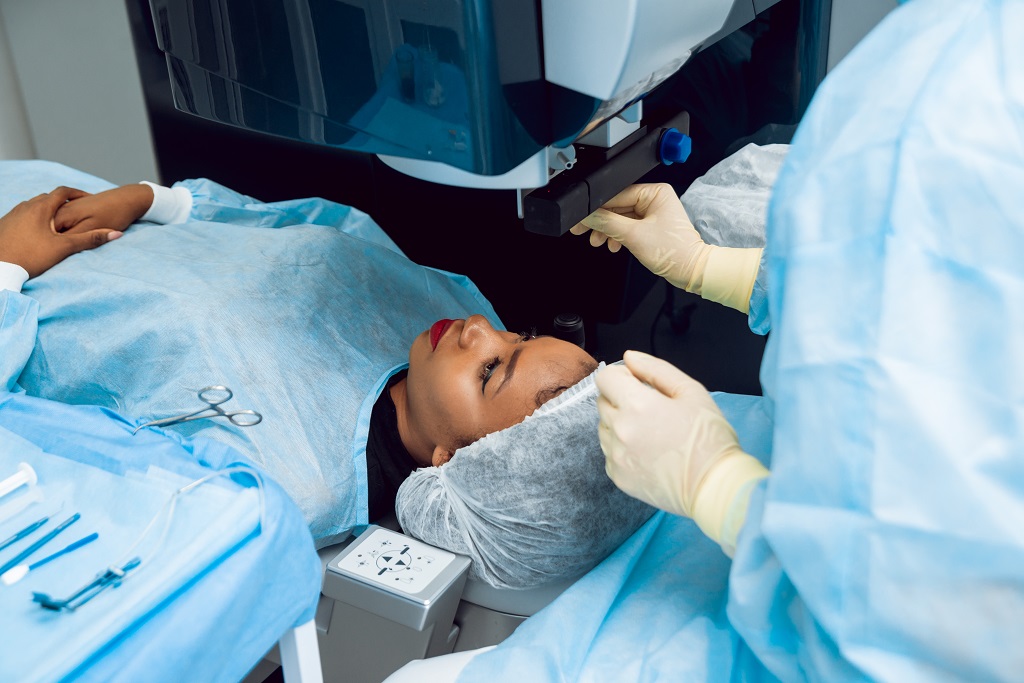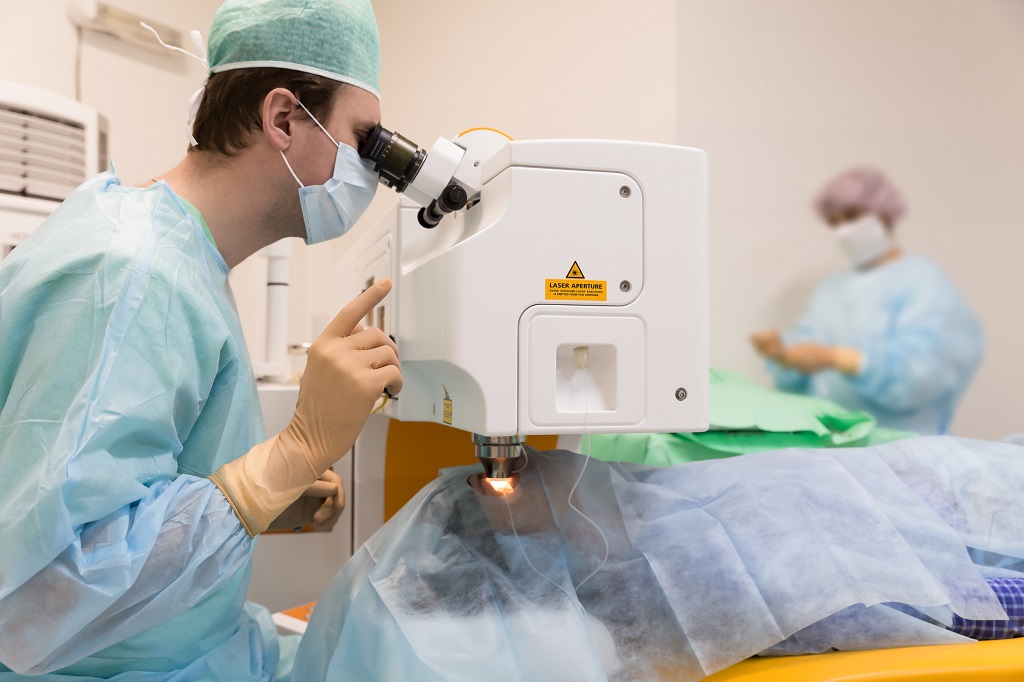
PRK and LASIK are two methods of eye surgery that can correct vision issues like nearsightedness, farsightedness, and astigmatism.
In both procedures, an excimer laser with incredible precision is used to resurface the contour of the cornea which is the front part of the eye that focuses light along with the lens inside the eye for clear vision.
The difference between LASIK and PRK is how each procedure reshapes the cornea. With LASIK, your surgeon will create a flap in your cornea. With PRK, the skin surface, epithelium, is removed and the underlying tissue is reshaped. The epithelium on the surface reheals in 5-7 days.
As with any surgical procedure, LASIK and PRK have risks and benefits. During your evaluation, the doctor will help determine the best procedure for your particular situation.
PRK and LASIK both involve the use of precise lasers to reshape irregular tissue on the cornea. Both procedures involve an excimer laser. LASIK also requires a femtosecond laser to create a ‘ flap ‘ of tissue.
With PRK, a laser is used to remove the top layer (epithelium) of the cornea, which will then grow back. With LASIK, the surgeon will use the femtosecond laser to create a flap of the front part of the cornea leaving the epithelium intact. The flap is elevated and the excimer laser is used to change the curvature of the underlying cornea.
You can expect the following during your PRK procedure:
You can expect the following during your LASIK procedure:

The doctor and refractive team will provide specific instructions on how to prepare for PRK or LASIK. They may instruct you to stop wearing contacts before the procedure, likely for a day or up to a few weeks prior.
When preparing for LASIK or PRK on the day of the procedure, it’s important that you don’t wear eye cream or makeup. You will not be able to drive immediately following the operation, so be sure to coordinate a ride home.
Prior to your LASIK or PRK surgery, the doctor will measure your cornea and pupils and check your vision.
Many debates whether PRK is safer than LASIK. Like all surgical procedures, it’s important to note that LASIK and PRK each have risks and benefits and slightly different healing expectations in the first few hours to days after the procedures.
Here are some risks and benefits associated with PRK vs LASIK:
Dryness associated with PRK and LASIK can occur. For the overwhelming majority if it were to occur it usually resolves or is back to baseline by 3-6 months postoperatively.
Unwanted images like halos, starbursting, or difficulties with night driving can occur with PRK or LASIK. For most these symptoms diminish mostly or completely as time passes. If they persist it may mean the power of the eye is either over or under-correction and needs to be addressed by the surgeon.
Well over 90% of patients are ‘on-target’ after PRK and LASIK. A low percentage, under 5%, may require a second surgery or enhancement to get the patient as close to the target as possible. Usually, this would be completed around 3 months postoperatively.
Visual distortions after PRK and LASIK are uncommon. Some can occur due to irregular healing. For most patients, this can be completely resolved with appropriate management.
Astigmatism can be present before and after surgery. If it is significant and affecting vision your doctor may recommend additional surgery to reduce or eliminate it.
Flap complications can occur with modern LASIK but with the use of femtosecond lasers, they are uncommon compared to earlier techniques involving microkeratomes.
Permanent vision loss after PRK or LASIK is exceedingly uncommon. Scarring would most likely be the cause. Corneal infections can cause scarring but are a rare occurrence. Prophylactic antibiotics are used to minimize this possibility.
In comparing PRK vs. LASIK recovery time, with LASIK you may have a functional driving vision and feel comfortable by 4 hours after surgery. With PRK your vision should be functional but most have some light sensitivity until the contact lens is removed on days 5 to 7.
Full recovery from PRK typically takes a month, with a gradual improvement in vision. LASIK recovery time is typically faster, with most patients seeing better immediately after surgery and full healing occurring over a few months.

With the PRK healing process, you may feel some slight sensitivity and burn due to the contact lens that has been placed. This bandage may also cause blurriness, but it will be removed after about one week.
You may instill artificial tear eye drops to lubricate the eye for proper healing and comfort. Your doctor may prescribe additional medications for pain relief.
Throughout the PRK recovery timeline, you may notice that your vision may worsen on day 3-5 but then progressively improves as the new epithelial surface becomes smooth. This is a normal and expected part of the PRK healing process.
The PRK healing process typically takes around a month, with gradual vision improvements. Your surgeon will monitor your healing through regular checkups. If you have any concerns, don’t hesitate to reach out to your doctor.
Recovery time for LASIK is considerably shorter than for PRK. Most patients see much better immediately following LASIK – without wearing glasses or contacts – than they did before. The day after surgery, some patients even note that their vision is near perfect.
As you heal from LASIK, you will experience minimal pain. Some patients report a burning sensation in the eyes, but that should not last longer than a few hours after surgery.
Your surgeon will prescribe eye drops to take for a few days after surgery that will alleviate dryness or discomfort.
Most patients report clear vision within a few days after LASIK surgery and full recovery within a few months.
You may be thinking, which is better: PRK or LASIK? PRK and LASIK can both permanently correct your vision. If the procedure is conducted by a skilled and licensed surgeon, then the final results between the two operations should not differ.
The main difference between PRK and LASIK is the time it takes to recover. With LASIK, it typically takes a few days to see clearly without glasses or contacts. With PRK, it usually takes around a month.
Both surgeries are considered safe and effective and are approved by the Food and Drug Administration.
When weighing your options of PRK vs. LASIK, it is important that you do your research. Here are some things to consider:
PRK and LASIK are both considered safe and effective treatments for nearsightedness, farsightedness, and astigmatism.
As with any surgical intervention, there are pros and cons of each operation, and it’s important to consult a skilled and licensed eye surgeon to find out if PRK or LASIK is right for you.
Schedule your free laser vision correction consult (in-person or online) today.